“There are two ways to forget the worries of life: music and cats”. To this statement by Albert Schweitzer, we are tempted to add music… “by Bach”, so essential was it to his life. Music was his consolation, his comfort in the face of life’s difficulties.
Schweitzer’s encounter with music was first and foremost an emotional one, that of a 3-year-old child who accompanied his father to Sunday worship in Gunsbach and, on spotting the organist on his platform, was struck with amazement: “It’s the devil looking into the church,” I said to myself; “when my father starts talking about God, he disappears. […] It was only later, when I’d been at school for several months, that I realised that the shaggy face making strange appearances was that of Father Iltis, the organist, whom I saw in the mirror attached to the organ”. (Memoirs of Childhood and Youth)
At the village school, young Albert is overly sensitive to music, having to lean against the wall when he hears the senior class singing in two voices, or almost fainting when he hears a brass band for the first time…
The time of first emotions was followed by that of tedious exercises. He took his first lessons from his father on the old upright piano in the family rectory. From this encounter with the keyboard, Albert Schweitzer would later make the following observation: “Musical improvisation has remained my only creative faculty”. But there can be no great musician without great teachers.
A first master, Eugène Munch
At the age of 10, Albert Schweitzer was sent to Mulhouse to live with his uncle Louis and aunt Sophie, an elderly couple with no children, to continue his secondary school studies. “After lunch, I had to practise the piano until I left for school; in the evening, when I’d finished my homework, I’d go back to the piano. “You don’t know whether, one day, music won’t be very useful to you”, my aunt used to tell me every time she took me back to my instrument, almost by force. Did she suspect that music would later help me to raise the funds needed to build a hospital in the virgin forests of the Ogooué? (Memoirs of Childhood and Youth) In Mulhouse, Schweitzer above all discovered his first master, Eugène Munch. Born in 1857, Eugène Munch was the organist at the reformed church of Saint-Etienne and had trained in Berlin.
The relationship between master and pupil got off to a rocky start, but little by little the former succeeded in channelling the latter and showed him what could be achieved through hard but necessary work. From then on, Albert Schweitzer worked tirelessly and explored Bach’s music with him, first on the piano and then on the organ. The master then decided that his young pupil, after his confirmation, was worthy of taking organ lessons “on the great and beautiful instrument of the church of Saint-Etienne”. “At last my secret desire, cherished all my life, was fulfilled”. (Memoirs of Childhood and Youth). When his teacher died in 1898, he published his first work as a tribute to the man who had enabled him to give his first concert at the age of 17 by entrusting him with the accompaniment of Brahms’s Requiem.
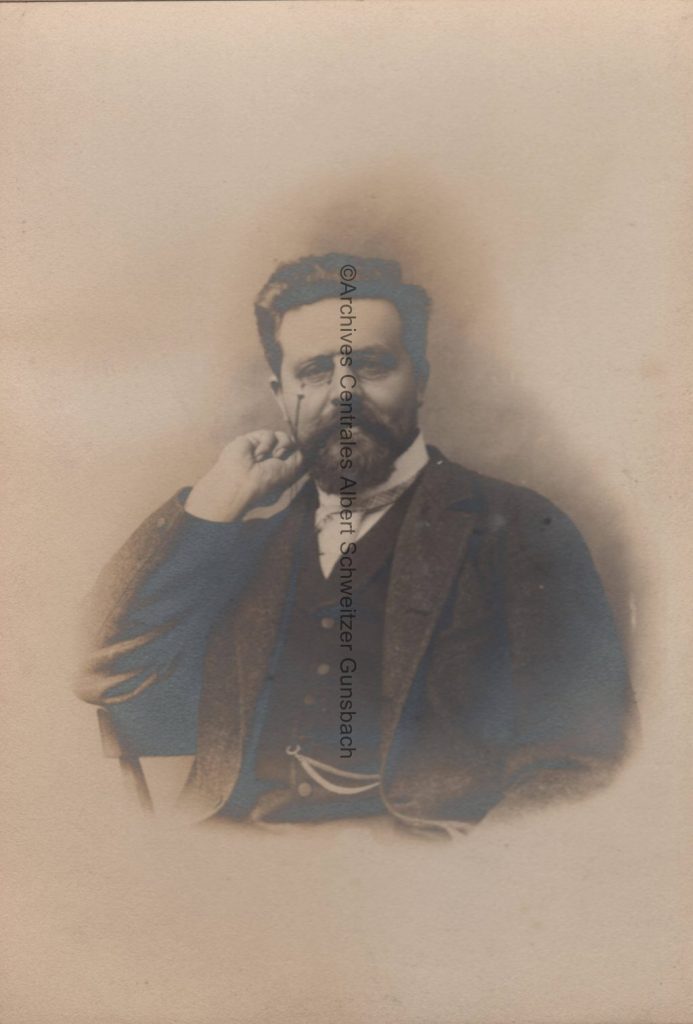
It was then that I experienced the joy, so often tasted since, of opening the sluices of the organ and mixing its streams of harmony with the voices of the orchestra and choir.
Memoirs of Childhood and Youth
Arriving in Strasbourg after his baccalauréat, the young musician studied philosophy and theology at the same time, without abandoning his love of music. Schweitzer met Ernest Munch (Eugène’s brother), who directed the choir at Saint-Guillaume church. Also trained in Berlin, he made his choir one of the most important centres for the rediscovery of Bach in Strasbourg. Albert Schweitzer soon became the choir’s organist and spent many hours with Ernest Munch analysing the scores of the German composer’s cantatas.
An admiration for Richard Wagner
In addition to his admiration for Bach, the young Albert Schweitzer had a particular fondness for Richard Wagner: “When I went to the theatre for the first time as a sixteen-year-old schoolboy in Mulhouse, it was to hear Tannhäuser. The music so overwhelmed me that I spent several days before I could pay any attention to my lessons”. At the Opéra de Strasbourg, he got to know all of Richard Wagner’s works in depth. “It was a great event for me to be able to go to Bayreuth in 1896 to attend the memorable revival of the Ring, first performed in 1876″. (Memoirs of Childhood and Youth). Albert Schweitzer subsequently returned to Bayreuth several times. It was there that he met Cosima Wagner, the daughter of Franz Liszt and wife of Richard Wagner, as well as Siegfried Wagner, the son of Cosima and Richard Wagner.
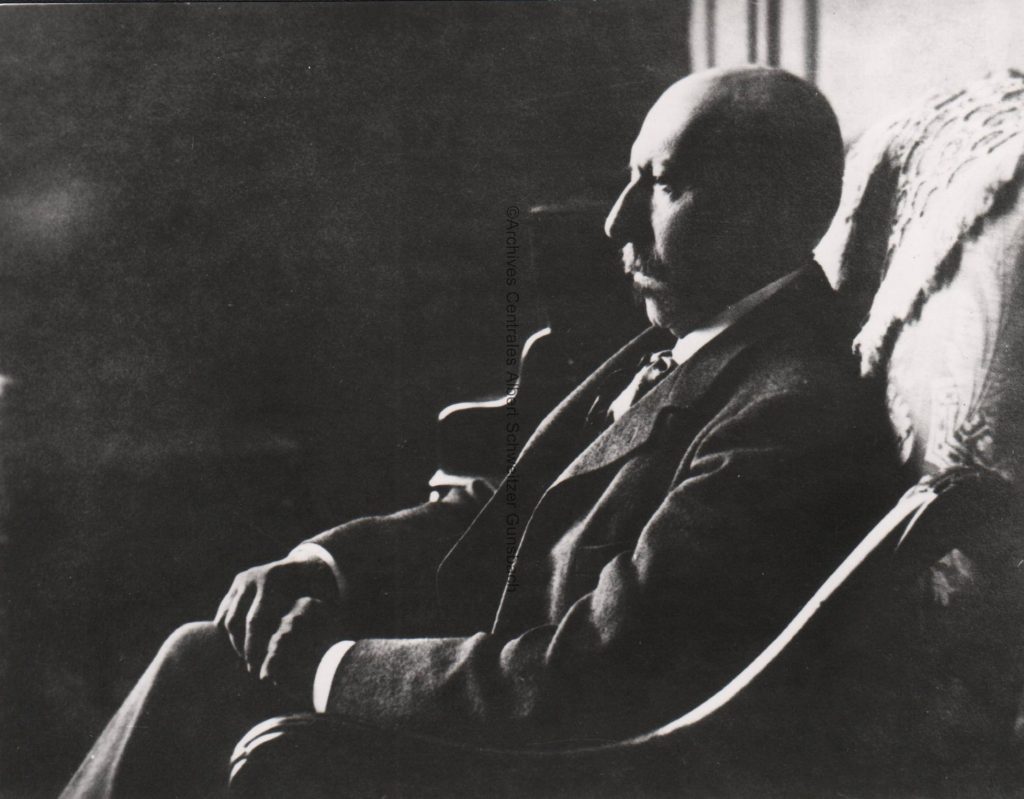
On the one hand ‘German’ Strasbourg, on the other Paris. It was in the French capital that Albert Schweitzer improved his technique and his game. In 1898, he left Strasbourg for a while to finish his philosophy thesis.
In Paris, Schweitzer worked with Charles-Marie Widor, the organist at the church of Saint-Sulpice and a renowned composer. Widor befriended the student, who arrived for his lesson without having slept in order to continue his philosophical research. He instilled in him his rigorous organ technique and got him to work mainly on Bach and César Franck. For his part, Schweitzer, a good Germanist, explained to him the meaning of the chorales on which Bach wrote part of his work. Schweitzer also took advantage of his stay in Paris to study piano with Marie Jaëll and Isidore Philipp, a teacher at the Paris Conservatoire.
Then for Johann Sebastian Bach
With the first, a disciple and friend of Franz Liszt, the future Nobel Prize winner worked rigorously on holding his hand to the keyboard and took part in experiments she conducted with the physiologist Charles Feré. A little later, Schweitzer translated her innovative method entitled Le Toucher into German. The following semester in Berlin enabled him to discover German organs. Everything he had accumulated over the years would soon come in handy. One four-letter name would never leave him: Bach.
Albert Schweitzer loved to play Franck and Widor, but it was Bach that he admired most of all. Not content with giving one concert after another in Strasbourg, the young musician began writing a book on the German composer.
In Jean-Sébastien Bach, le musicien-poète, published in 1905, he makes an aesthetic study of the work of the Leipzig Cantor, looking back at sacred music in Germany up to Bach, evoking the life and character of the composer, describing the genesis of the works and the musical language of the famous German composer and, very importantly for him, explaining how to perform his works.
The 450-page book in French was a success and the publisher offered to translate it into German. Schweitzer was 30 years old. He had just started his medical studies, but agreed to translate the text, which he would in fact rewrite, with the result that the book was almost twice as long as the French version. This second “Bach” was published in Germany in 1908.
On 28 July 1909, before his departure for Lambaréné, Albert Schweitzer organised the first anniversary concert of Johann Sebastian Bach’s death, which became a tradition in Strasbourg’s Saint-Thomas church. He also began work on a complete edition of Bach’s organ works in 8 volumes for the famous American music publisher G. Schirmer. This titanic project, begun in 1912 with Widor (for the first five volumes), would not be completed until fifty years later in collaboration with Edouard Nies-Berger.
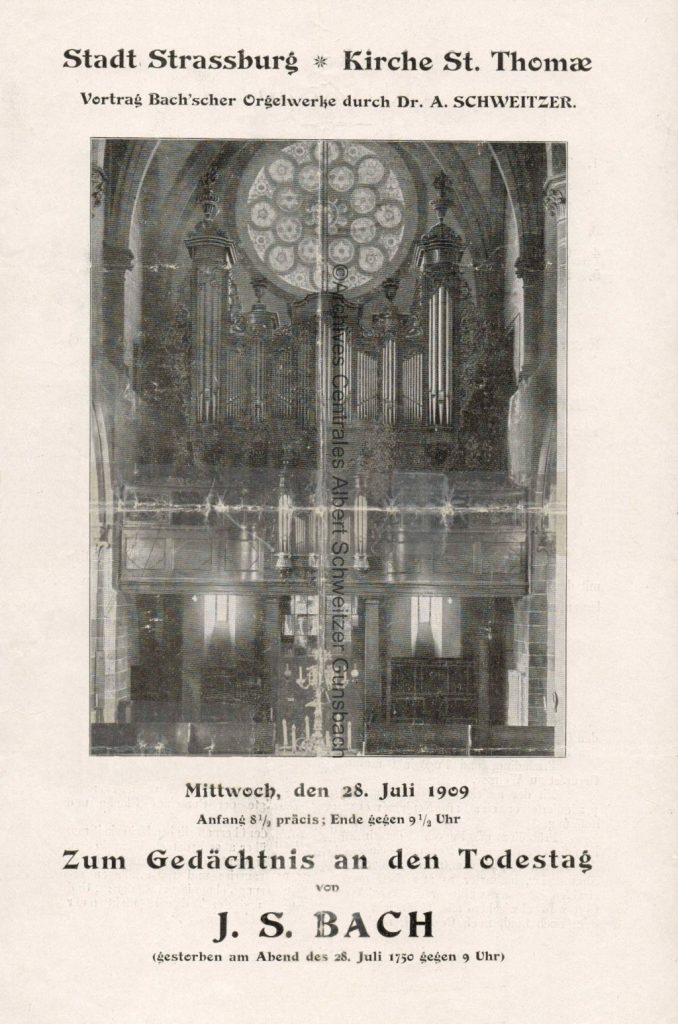
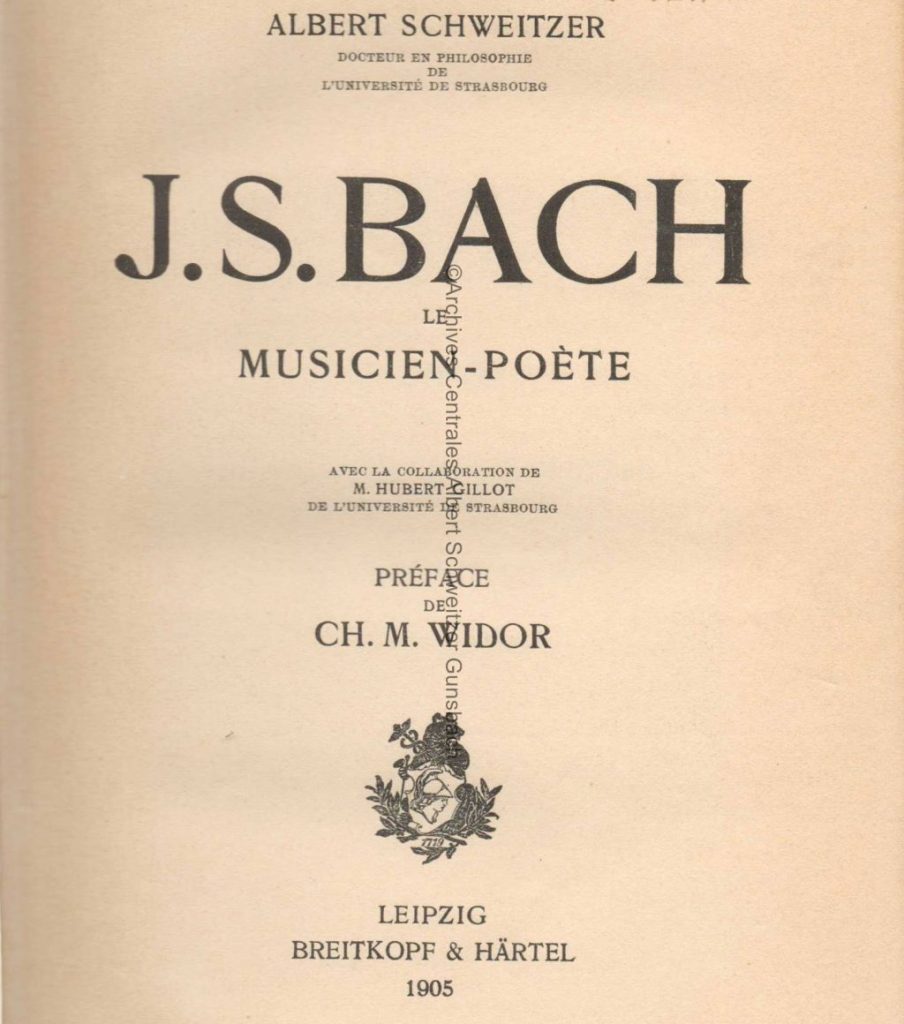
In the space of a few years, Schweitzer made a name for himself in the musical world on both sides of the Rhine. He was in demand in Paris from 1905, where he accompanied the choir and orchestra of the “Société Jean-Sébastien Bach”, which he had helped to found with Gustave Bret, among others, and which performed at the Salle Gaveau several times a year. He was also in demand in Barcelona from 1908, where he accompanied the Orféo Catalá, performed as a soloist and gave lectures.
The fact remains that Schweitzer is criticised today for the slowness of his organ playing. If you listen to one of his recordings, you’ll be struck by his tempo. The composer Nicolas Nabokov, cousin of the famous Russian writer, said of him: “Johann Sebastian Bach, when played in Alsace by his famous doctor-biographer, was what a Volkswagen is to a Porsche. The musician, who played according to Widor’s precepts, actually wanted all the voices to be heard clearly. The fact remains that subsequent generations of organists played Bach at faster tempi than Schweitzer.
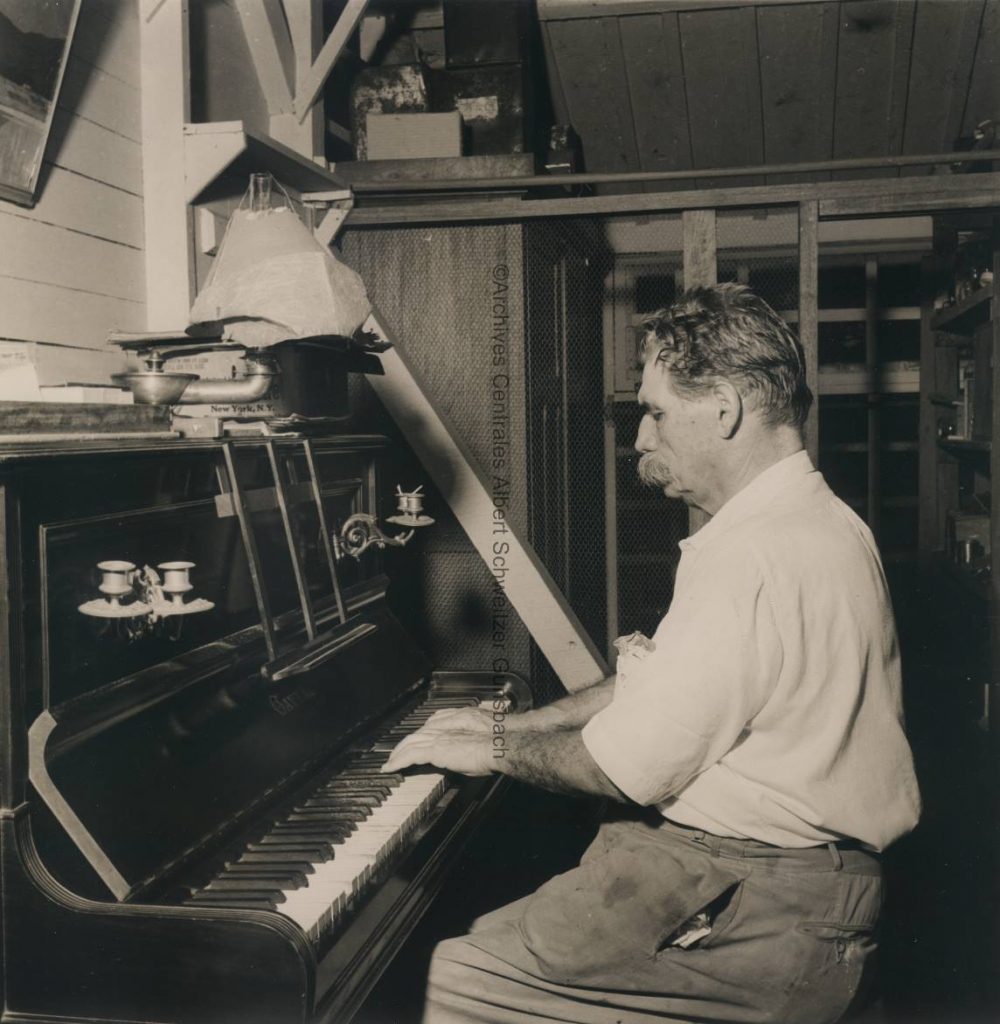
Like his role model, Albert Schweitzer also took a great interest in organ building. In 1906, he wrote a short treatise entitled “The art of building organs and the art of playing the organ in Germany and France”, and helped to draw up international regulations for the construction of modern organs at an international congress in Vienna in 1909. He was also committed to preserving our historical heritage, as demonstrated by his fight to save the Silbermann organ in the church of Saint-Thomas in Strasbourg.
All his life, moreover, the musician tried to give advice in this field, often in vain, as he himself admits:
“How many times have all these letters, trips and consultations come to nothing, because the interested parties decided in favour of the factory organs, which were so magnificent according to the prospectuses!”
When Schweitzer left Alsace for Gabon in 1913, he left behind his family, his friends, the University and everything that had been his daily life for years. But alongside his medical equipment, it is important to note that he took with him his pedal organ piano, which arrived by pirogue in his wake on the Ogooué. This piano would allow him to practise for his concerts when he returned to Europe and would enable Johann Sebastian Bach, as Schweitzer himself pointed out, to contribute to the financing of the Lambaréné hospital.
Benoît WIRRMANN (Published in Les Saisons d’Alsace, special edition February 2013, p.98-103)